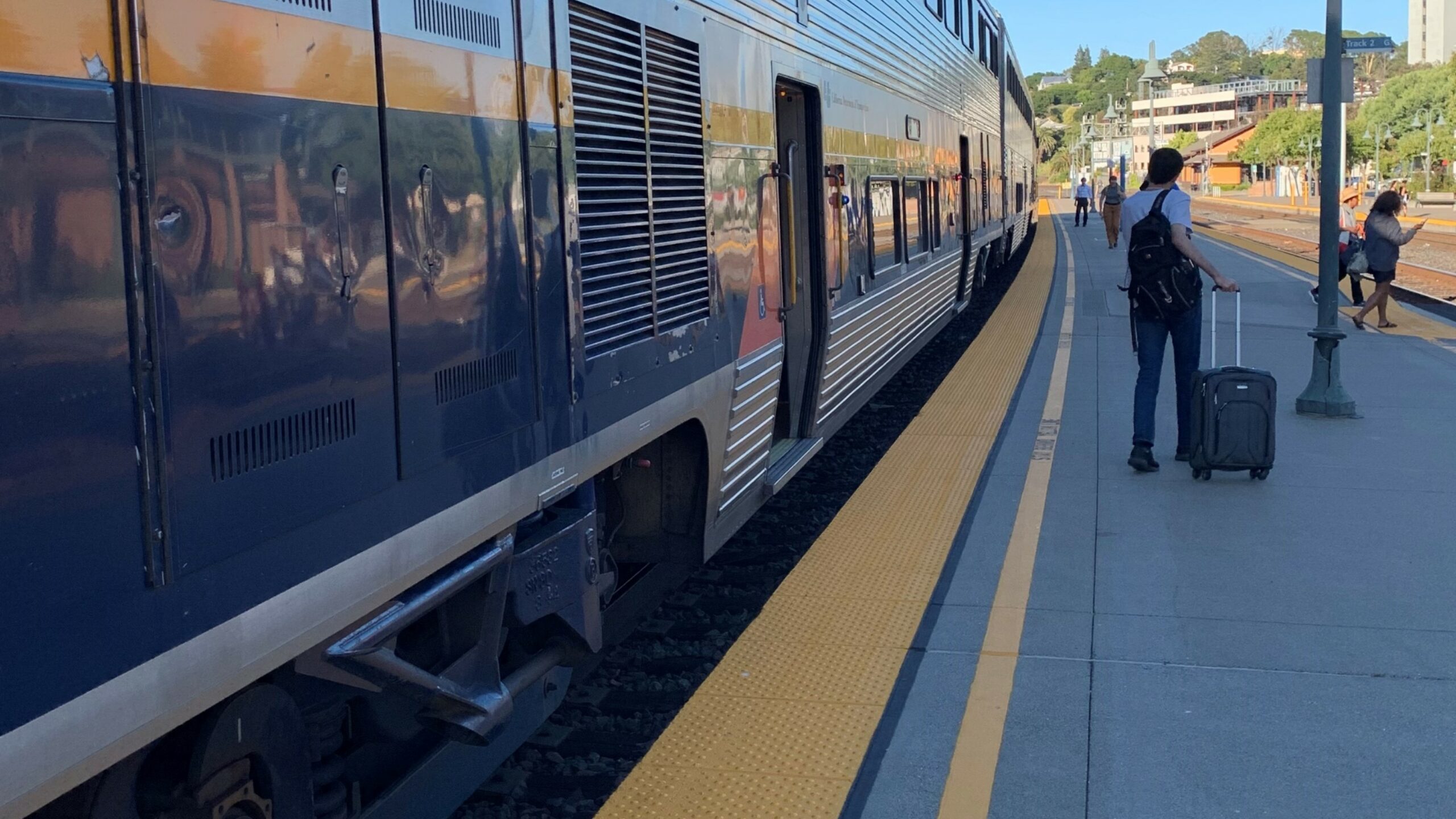
A new platform-interface standard for California
Unifying California Rail with Enhanced Accessibility
To address inconsistent platform clearances and improve passenger boarding in California, a Caltrans led working group of rail agencies, supported by DB E.C.O. North America, unanimously selected a uniform platform standard (one high and one low platform), paving the way for enhanced rail interoperability and accessibility across the state.
Challenge
The California Department of Transportation (Caltrans) identified the need to establish a state-wide platform and clearance standard to enable future interoperability between corridors and level-boarding for passengers. Current state-wide clearance regulations are too wide to achieve level-boarding through vehicle-borne gap fillers and large gaps and stairs for boarding are commonplace, leading to poor customer experience, especially within the ADA community. Manually deployed solutions for boarding increase train dwell times or require additional infrastructure.
The absence of a standard or realistic requirements also makes rolling stock procurement decisions and station construction planning difficult and can lead to costly decisions that could require additional capital to resolve in the future. Further efficiencies could arise with the setting of a standard including fleet sharing opportunities, procurement synergies, and standardized OEM vehicle offerings leading to reduced costs and less customization.
Approach
The DB team helped Caltrans developing and facilitating a statewide working group comprised of representatives from all California passenger rail agencies to propose standard state-wide clearances. A standard will enable agencies to make long-term investment decisions and to achieve level boarding throughout the state. The working group met regularly and closely aligned common interests. Our experts considered current conditions and what would be required to achieve level boarding. We analyzed data from across the state, examining current fleet ages, life expectancies, horizontal clearances, vehicle floor heights, and upcoming procurements. Manufacturers of rolling stock were interviewed on their current offerings and research was conducted on gap filler solutions. A database of platforms was developed to understand existing heights and horizontal offsets. Current regulations were researched, and the Americans with Disabilities Act (ADA) guidelines assessed.
Results
DB assisted the working group to reach a consensus on two platform heights (low and high, with the high platform height intended primarily for future high-speed services) and hence on a standard that ultimately will lead to level boarding and interoperability throughout the state. With this realistic proposal for a standard supported by all California passenger rail agencies, the development of an implementation plan is in sight. Even though full implementation is expected to span decades given the long lifespan of platforms and rolling stock, it will be an unprecedented achievement in U.S. passenger rail, the initial impact of which will be felt immediately as investment decisions can soon be made on a sound basis. The remaining steps in the process are to gain support for the proposed standard by regulatory agencies and infrastructure owners.





